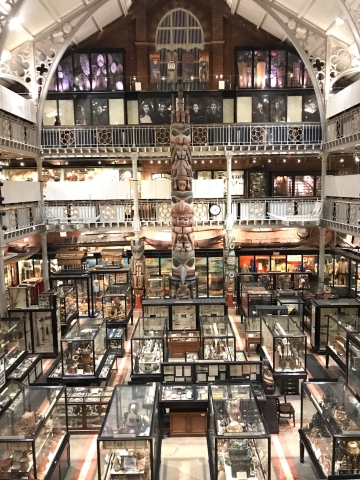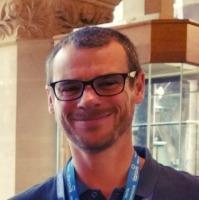Read Matt Zawadski's account of sessions on Emulation and Software Preservation at PASIG 2017. Matt, who works at the University of Sheffield, attended PASIG with support from the DPC's Leadership Programme which is generously funded by our Commericial Supporters.
The PASIG conference arrived at the Museum of Natural History in Oxford with delegates from over 30 different countries attending. The first day consisted of a bootcamp, designed to get delegates ‘on the same page’ regarding all things digital preservation (DP) whilst days two and three of the conference consisted of presentations on various topics covering many aspects of digital preservation.
The venue for PASIG 2017 is home to both the Museum of Natural History and the Pitt Rivers museum, and both were open for delegates to avail themselves of during quieter periods when conference presentations regarding digital preservation were not foremost in their thoughts. The museums and Oxford served as a mirror to some broader themes that struck me as I attended the conference as a first timer, due to a generous scholarship from the DPC.

The eclectic collections within both museums brings me to the first of those themes, that of diversity and collaboration. Reflected via the different countries, disciplines and institutions represented, there was huge range of experience and understanding across the digital preservation spectrum. This truly was an international gathering and the conference was far stronger for it. The resulting mix, like the museum collections, produced discussion amongst delegates that was interesting, stimulating and thought provoking. No one individual is going to hold the expertise required to address the entire lifecycle associated with a DP problem in their entirety, and only by collaborating with colleagues from different disciplines can one begin to understand and deal with the challenges confronting us. Indeed such collaboration is likely to extend across different organisations and geographical locations, and the diversity of the conference reflected this.

The museum building itself has played host to two significant events - the 1860 evolution debate, seven months after the publication of Charles Darwin's On the Origin of Species, whilst the lecture theatre, where papers were presented, hosted in 1894 the first public demonstration of wireless telegraphy. These two events represent another theme that of discourse, learning and innovation. Discussion was ever present between colleagues on topics of interest or presentations just witnessed, be it during tea and lunch breaks, or at the conference dinner in the splendid surroundings of Wadham College hall, or the reception hosted at the Bodleian Library. People were keen to talk, to engage, to discuss, and to make connections. Colleagues were also keen to hear of success stories, of innovation, of failures, to take particular elements from what they had heard and think about them in the context of their own organisations and circumstances.

The various University buildings we were surrounded by during the conference present another theme - the long view, and how digital preservation must try to address two seemingly opposing values, that of change and of stability within the organisations that we work for. The magnificent surroundings have for centuries promoted attributes such as stability, consistency and standards, yet at the same time the University and its buildings have had to evolve, innovate and adapt. From my perspective as an archivist, this is what digital preservation is forcing us to do. It is a discipline that is forcing us to think hard about the principles, standards, processes and procedures we have in place and decide whether they are still for purpose in a rapidly changing environment. My own view is that the tension that can sometimes exist between change and stability is not something that has a winner and loser necessarily, but rather that it allows both to evolve with mutual benefits to the organisation overall.

At the reception in the Bodleian Library, the Director of Libraries at the University of Cambridge, Dr. Jessica Gardener described those involved in digital preservation activities as ‘pioneers and prophets’, and this is a particularly apposite phrase. Those involved will often feel frustrated, marginalised or on the periphery of their professions. They may feel out of their comfort zone or unable to determine how to move forward in such a challenging environment. Yet as Oxford and the PASIG conference demonstrated change can happen, success can be achieved, and at the heart of it has a supportive, diverse and vibrant community.













































































































































